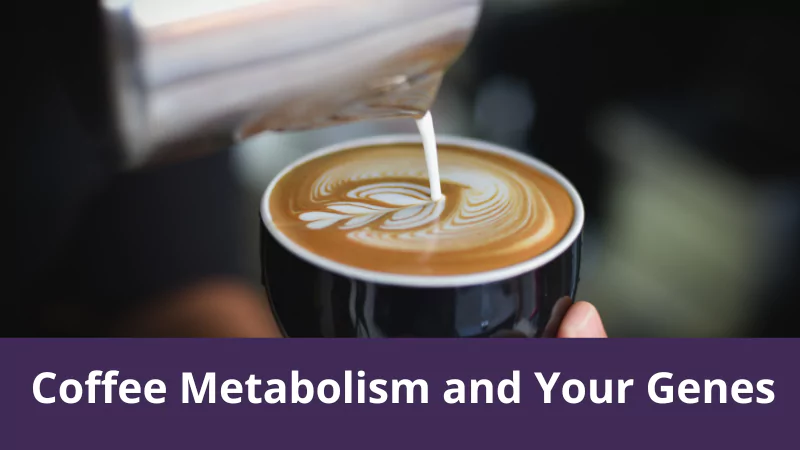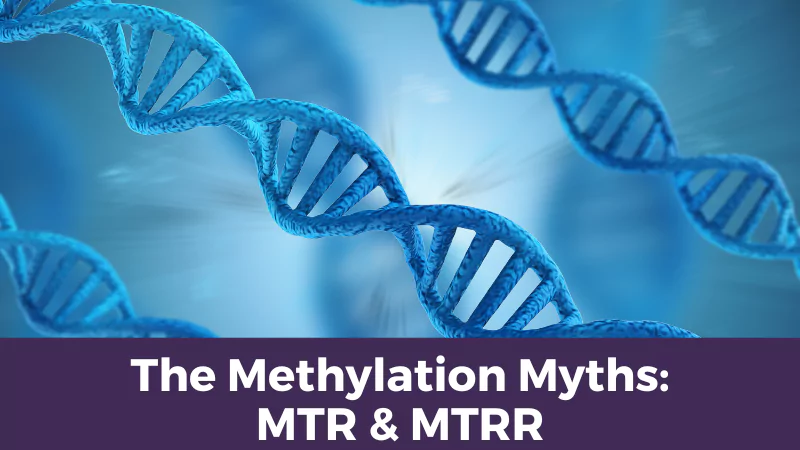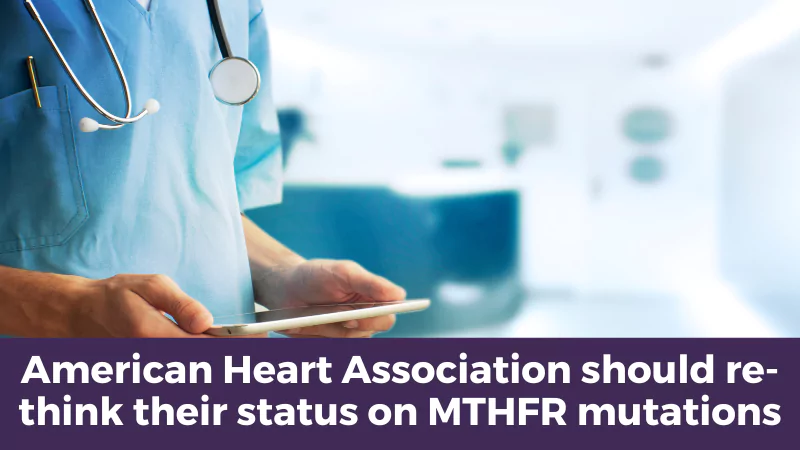Coffee is one of the world most popular drinks, one can find dozens of coffee shops in virtually every town or city. The reason for this is due to coffees’ many known health benefits and its stimulating effects. Coffee and its many chemical compounds have been found to decrease the risk of dementia and Alzheimer’s disease, Parkinson’s disease and type 2 diabetes. Although, in contrast to its benefits there may also be links to increased risk of some cancers, blood pressure, and myocardial infarction conditions.
We will see how coffee affects the body and which genes play a role in the metabolism of coffee. We will also be looking at how coffee may affect gene expression and how polymorphisms in the CYP1A1 and CYP1A2 genes affects its metabolism.
Coffee and its compounds
Coffee contains many complex organic compounds with beneficial antioxidants and endocrine properties, the most well-known of these compounds is caffeine. Caffeine is the chemical responsible for the stimulation of the central nervous system, the reason why we feel stimulated and energized. Coffee also contains polycyclic aromatic hydrocarbons (PAH) compounds that are produced when the coffee beans are roasted. PAH compounds are a class of carcinogen that form when there is an incomplete combustion of organic matter. These PAH compounds may cause mutagenesis if consumed in large quantities.
Coffee metabolism
The cytochrome P450 1A1 enzyme encoded by the CYP1A1 gene metabolizes PAHs including benzo pyrene, this cytochrome is found mostly in the liver but has been found in small quantities in the brain and cortical regions. The P450 1A1 enzyme plays an important role in coffee metabolism because the faster it can break down the carcinogenic PAH compounds the less likely mutagenesis may take place.
Caffeine is predominantly metabolized by the cytochrome p450 enzyme encoded by the CYP1A2 gene, which is then further processed by the enzymes CYP2A6 and NAT2. Studies have shown that a genetic polymorphism in the CYP1A2 gene can affect the rate at which caffeine is metabolized in the liver. Individuals who have the C-A polymorphism in the intron one of CYP1A2 may have an increase in the ability to metabolise caffeine – essentially it breaks caffeine down too fast. This explains how some individuals are less affected by the stimulating effects of caffeine and are able to drink coffee before sleep, while others may experience increased stimulation and are not able to fall asleep easily.
The cytochrome P450 genes are a superfamily of heme-containing mono-oxygenases that metabolize many xenobiotics, including drugs, carcinogens, and toxins, as well as endogenous compounds such as fatty acids and neurotransmitters.
Physiological effects and uses of caffeine
Caffeine affects the brain and central nervous system by acting on the adenosine receptors, specifically the A1 and A2a by means of inhibition, and the main receptor caffeine targets is the A2a receptor. Adenosine inhibits the release of neurotransmitters such as dopamine, the chemical which controls the brain’s reward and pleasure centres, if this pathway is antagonized by caffeine we may have more dopamine released in the body and will feel the so called ‘buzz’ that caffeine provides. The beneficial effects of caffeine include improved psychomotor speed, mood, concentration, and alertness.
Individuals who are sensitive to caffeine may experience negative effects such as insomnia, anxiety, and dysphoria. In extreme cases, caffeine intake may also play a role in suicide. Studies have shown excessive coffee consumption may increase the risk of hypertension as caffeine is known to increase blood pressure, other risks include myocardial infarction and an increased risk of breast cancer in BRCA1 carriers.
Some other uses of caffeine include taking it with painkillers such as aspirin, acetaminophen or ergotamine for treating migraine headaches. Others use caffeine for asthma, gallbladder disease, attention deficit hyperactivity disorder, and for low blood pressure. Caffeine is also popular for weight loss and treatment of type 2 diabetes and in cream for it can be used to treat itching and certain types of dermatitis. Caffeine is commonly used amongst athletes due to it being legal in many professional sports.
Conclusion
Coffee consumption has its positives and negatives but which of its effects one receives is ultimately dependent on how much is consumed and one’s biological makeup. One study found that older men and women may benefit from the effects of daily consumption, decreasing the mortality rate by 10 -15%. Those who drank between four and six cups a day found that it lowered the risk of heart disease, respiratory disease, stroke, diabetes, and infections. Counterintuitively another study showed that coffee increased the death rate of people under the age of 55. For younger individuals it is then recommended that no more than 2 to 3 cups a day should be drunk as this had little effect on mortality.
So moderation is key. Knowing whether you break down coffee too fast or too slow will give you an indication as to whether you should be drinking it or not. A cup a day for most people is fine.
The key rs id to look out for is the rs762551 (CYP1A2*F). AA is the fast metaboliser that puts pressure on Phase 2 enzymes to do the job and the CC is the slow which means the caffeine is not broken down efficiently.
References:
Cornelia M Van Duijn, Najaf Amin, Enda M Byrne, Julie Johnson, Georgia Chenevix-Trench, etal.. Genome-wide association analysis of coffee drinking suggests association to CYP1A1/CYP1A2 and NRCAM. Molecular Psychiatry, Nature Publishing Group, 2011. Andrea R Josse, Laura A Da Costa, Hannia Campos, and Ahmed El-Sohemy,2012, Associations between polymorphisms in the AHR and CYP1A1-CYP1A2 gene regions and habitual caffeine consumption
<http://ajcn.nutrition.org/content/96/3/665.full>
WebMD, LLC, 2017, CAFFEINE: Uses, Side Effects, Interactions and Warnings,
https://www.webmd.com/vitamins-supplements/ingredientmono-979-caffeine.aspx?activeingredientid=979
Thierry Goasduff, Yvonne Dréano, Bernard Guillois, Jean-François Menez, François Berthou, 1999, Induction of liver and kidney CYP1A1/1A2 by caffeine in rat
<https://www.sciencedirect.com/science/article/pii/S0006295296005229>









